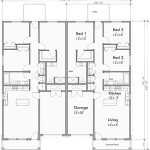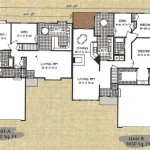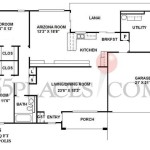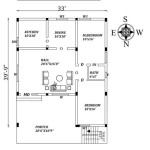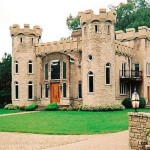1500 Sq Ft House Plans Kerala Style: A Detailed Exploration
Kerala architecture, renowned for its aesthetic appeal and functional design, continues to influence modern house construction. The 1500 sq ft house plan in Kerala style represents a sweet spot, offering ample living space while maintaining affordability and manageability. This article explores the key characteristics, considerations, and design elements associated with crafting a 1500 sq ft Kerala-style home.
The Kerala architectural style is deeply rooted in the region's climate, topography, and cultural heritage. Its distinct features include sloping roofs, generous verandas, intricate woodwork, and the presence of an inner courtyard (Nadumuttam), if space permits. Modern adaptations often blend traditional elements with contemporary building materials and techniques to create homes that are both visually appealing and practically efficient.
Planning a 1500 sq ft house in the Kerala style requires careful consideration of the layout to maximize space utilization and reflect the traditional aesthetic. Common design principles involve open floor plans, strategic placement of windows and ventilators for natural light and ventilation, and the incorporation of traditional elements like Athangudi tiles or laterite stone accents.
Key Considerations for 1500 Sq Ft Kerala Style House Plans
Several factors demand careful attention when embarking on a 1500 sq ft Kerala style house project. Optimizing the available space is paramount, achieved through efficient layout designs and multi-functional areas. Understanding local building codes and regulations is critical to ensure compliance. Furthermore, budget considerations play a significant role in determining the materials used and the complexity of the design.
The orientation of the house on the plot significantly impacts energy efficiency and natural light penetration. Kerala's tropical climate necessitates designs that promote cross-ventilation and minimize direct sunlight exposure on the walls and roof during peak hours. Proper placement of windows and the use of shading devices can significantly reduce the need for artificial cooling, leading to lower energy bills.
The integration of traditional architectural elements, such as the sloping roof (designed for effective rainwater runoff) and the veranda (acting as a buffer zone against heat and rain), should be balanced with modern requirements. The use of locally sourced materials like wood, clay tiles, and laterite stone not only adds authenticity but also supports the local economy and reduces transportation costs.
Budgetary constraints need to be assessed before finalizing the design. The cost of construction can vary depending on the materials chosen, the complexity of the design, and the labor charges in the area. Prioritizing essential features and opting for cost-effective alternatives without compromising on quality and aesthetics is a prudent approach.
Common Layout Designs for 1500 Sq Ft Kerala Style Homes
A typical 1500 sq ft Kerala style house plan often incorporates three bedrooms, a living room, a dining area, a kitchen, and two bathrooms. The layout can be adapted to suit individual preferences and needs. Two prevalent layouts include the rectangular plan and the square plan.
The rectangular plan is often favored for its simplicity and efficient space utilization. It typically features a linear arrangement of rooms, with the living room at the front and the bedrooms towards the rear. This layout allows for easy access to all areas of the house and can be easily adapted to accommodate a veranda along the front facade.
The square plan, on the other hand, offers a more compact and symmetrical design. It may incorporate an inner courtyard (Nadumuttam) in the center, providing natural light and ventilation to all surrounding rooms. This layout is particularly suitable for smaller plots where maximizing space efficiency is crucial.
Open floor plans, where the living room, dining area, and kitchen are seamlessly integrated, are increasingly popular in modern Kerala-style homes. This design creates a sense of spaciousness and facilitates social interaction. However, careful zoning is necessary to define each area and prevent a cluttered feel.
The placement of bedrooms is crucial for privacy and comfort. Ideally, bedrooms should be located away from high-traffic areas like the living room and kitchen. Master bedrooms often include attached bathrooms and walk-in closets for added convenience. Guest bedrooms can be positioned closer to the living room for easy access.
Incorporating Traditional Kerala Architectural Elements
The essence of Kerala architecture lies in its distinctive stylistic features. Integrating these elements into a 1500 sq ft house plan can create a visually appealing and culturally resonant home. Key elements to consider include the sloping roof, the veranda, the use of wood, and traditional building materials.
The sloping roof is a defining feature of Kerala architecture. It is designed to efficiently shed rainwater and protect the house from the elements. Traditional Kerala roofs are typically made of clay tiles, which provide excellent insulation and add to the aesthetic appeal. Modern alternatives include concrete tiles or metal roofing sheets that mimic the appearance of clay tiles.
The veranda, or "pial," is an integral part of the Kerala house. It serves as a transition zone between the indoors and outdoors, providing a shaded area for relaxation and social interaction. The veranda can be designed with pillars and railings made of wood or concrete, adding to the architectural character of the house.
Wood plays a significant role in Kerala architecture. Traditionally, teakwood was used extensively for doors, windows, pillars, and roofing. Modern alternatives include other hardwoods like mahogany or rosewood, as well as engineered wood products that offer durability and cost-effectiveness. Intricate wood carvings and detailing can further enhance the aesthetic appeal of the house.
Traditional building materials like laterite stone, clay bricks, and Athangudi tiles are commonly used in Kerala style homes. Laterite stone, with its reddish-brown hue, is used for the foundation and walls, providing excellent thermal insulation. Clay bricks are used for constructing walls and partitions. Athangudi tiles, handmade in the Athangudi village of Tamil Nadu, are known for their intricate patterns and vibrant colors, adding a touch of traditional elegance to the floors.
The Nadumuttam, or inner courtyard, is a central feature of traditional Kerala homes. While a full-fledged courtyard may not be feasible in a 1500 sq ft house, a scaled-down version can be incorporated as a small open space with a skylight or a planted area. This can serve as a source of natural light and ventilation, creating a refreshing and serene atmosphere.
Windows should be strategically placed to maximize natural light and ventilation. Large windows facing east and west should be avoided to minimize direct sunlight exposure during peak hours. The use of louvers, screens, and overhangs can help to control sunlight and provide shade.
The incorporation of traditional Kerala-style furniture can further enhance the aesthetic appeal of the house. Wooden furniture with intricate carvings and detailing, such as chairs, tables, and chests, can add a touch of elegance and authenticity. Upholstery in traditional fabrics and colors can complement the overall design.
Landscaping plays a crucial role in creating a Kerala-style ambiance. The use of native plants, such as coconut trees, palm trees, and flowering shrubs, can enhance the natural beauty of the surroundings. A well-maintained garden with a lawn and flowering plants can create a relaxing and inviting outdoor space.
Color palettes should be carefully chosen to reflect the traditional Kerala style. Earthy tones, such as browns, greens, and ochres, are commonly used for walls and exteriors. Accents in brighter colors, such as reds, yellows, and blues, can be used for doors, windows, and furniture. The use of natural materials like wood and stone can also add warmth and texture to the color scheme.
Lighting is an important aspect of interior design. Traditional Kerala homes often use warm and ambient lighting to create a cozy and inviting atmosphere. The use of oil lamps and lanterns can add a touch of traditional charm. Modern lighting fixtures that mimic the appearance of traditional lamps can also be used.
By carefully considering these design elements, it is possible to create a 1500 sq ft Kerala style house that is both aesthetically pleasing and functionally efficient. The key is to balance the traditional elements with modern requirements and personal preferences.

Two Kerala Style House Plans Under 1500 Sq Ft With Full Plan And Specifications Small Hub

Two Kerala Style House Plans Under 1500 Sq Ft With Full Plan And Specifications Small Hub

അഞ ച സ ന റ ൽ 1500 Sq Ft House Plans Kerala 3 Bedroom Design Haneed Anugrahas

10 Best 1500 Sq Ft House Plans As Per Vastu Shastra

3 Bedroom Home In 1500 Sqft For 25 Lakhs With Free Plan Kerala Planners

Kerala Architecture Plans Dec 06 Ff 1500 Square Feet House Plan Sq Ft Modern Floor

1500 Sq Ft Modern Style Home Design

1500 Sq Ft House Plan With Car Parking Living Room Dining

Kerala Style Double Y House Plans Under 1600 Sq Ft For 5 Cent Plots Small Hub

3 Bedrooms 1500 Sq Ft Modern Home Design Kerala House 2 Y Facades

